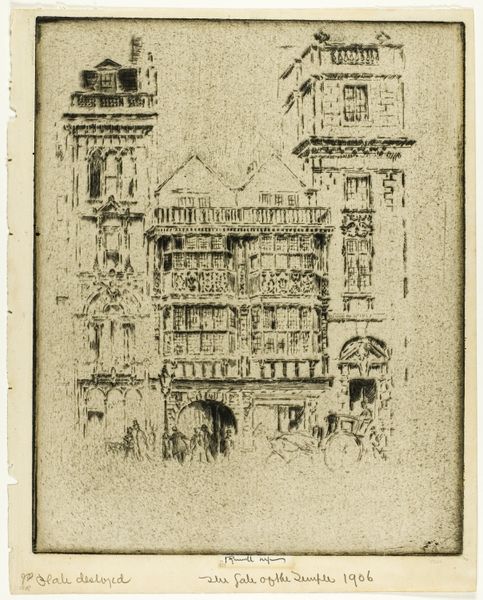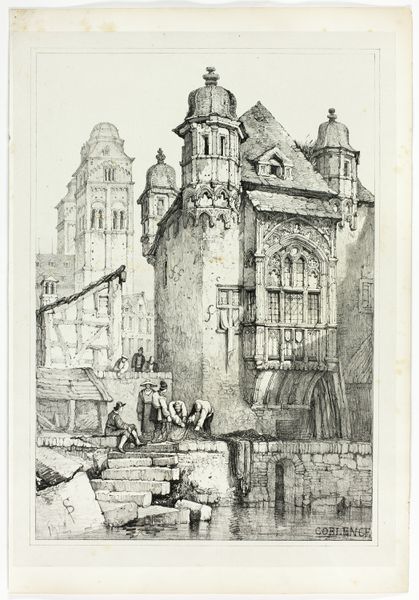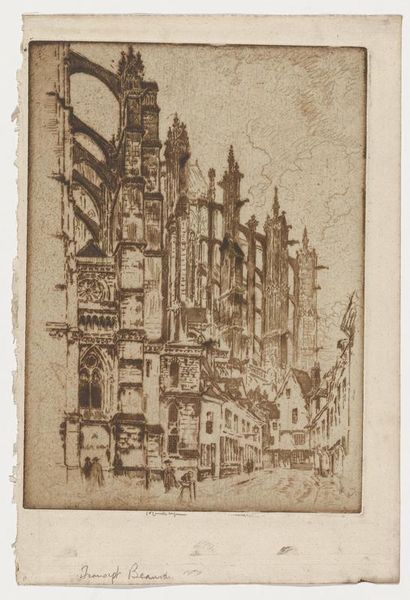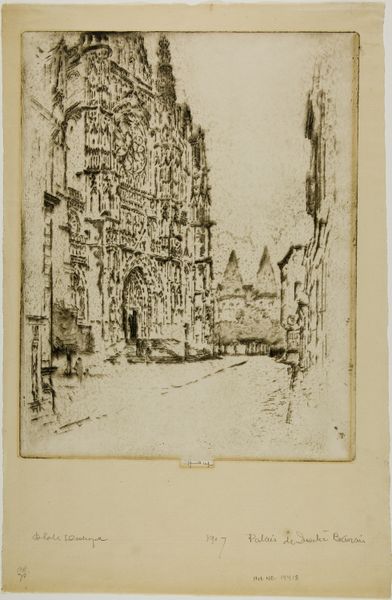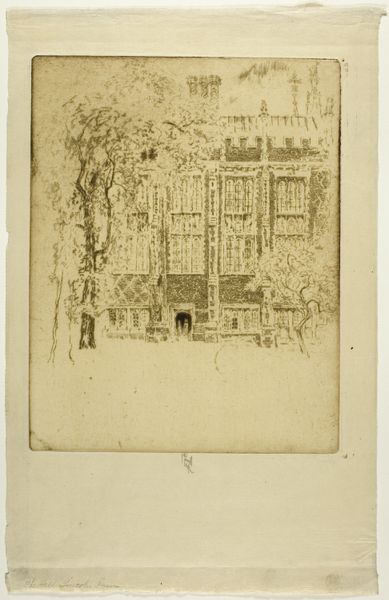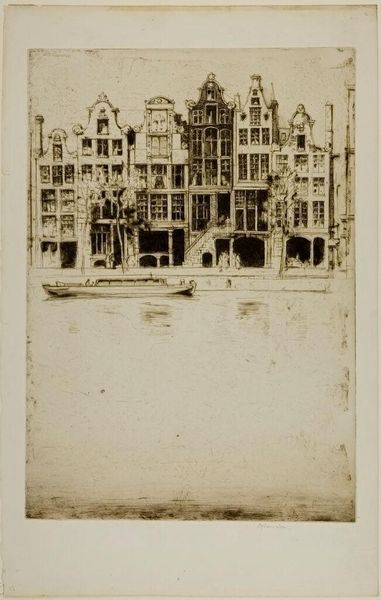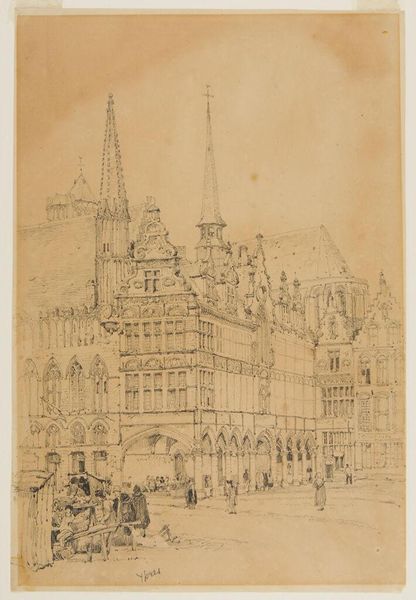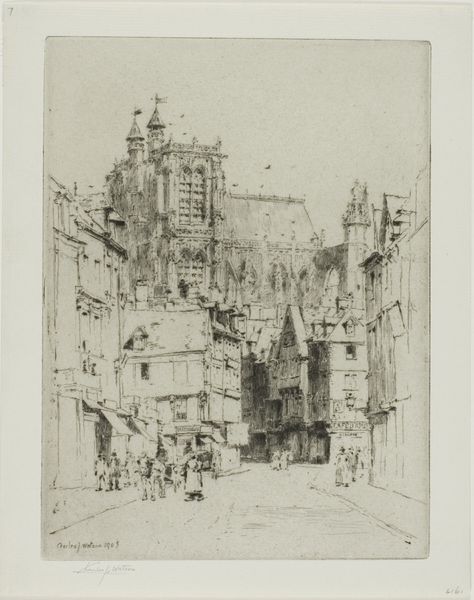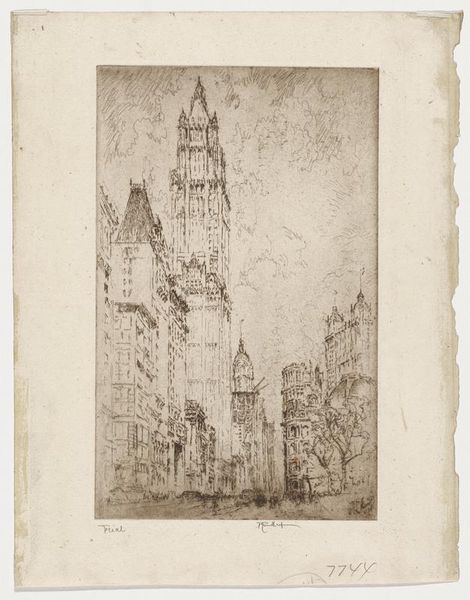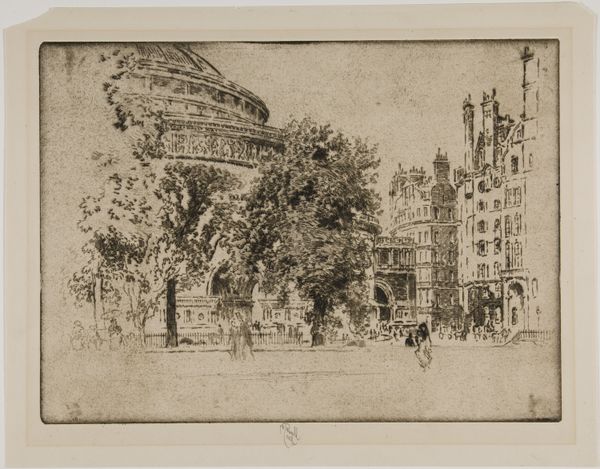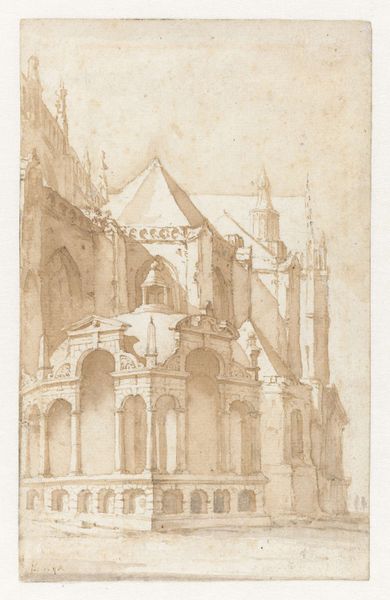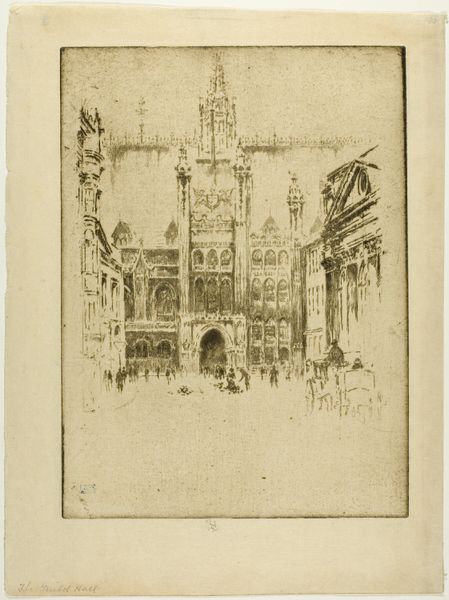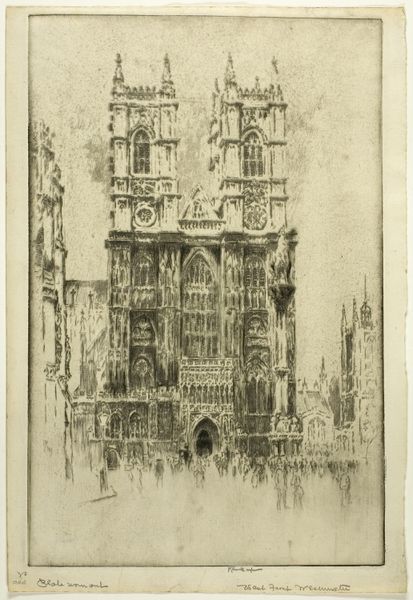
print, etching, engraving
# print
#
etching
#
line
#
cityscape
#
engraving
#
realism
Dimensions: 12 1/4 x 9 1/8 in. (31.12 x 23.18 cm) (plate)14 7/8 x 11 in. (37.78 x 27.94 cm) (sheet)
Copyright: No Copyright - United States
Curator: Joseph Pennell's 1923 etching, "The Times Annex," now residing at the Minneapolis Institute of Art, offers a compelling look at urban development during a transformative period. Editor: Immediately, I'm struck by the delicate, almost ephemeral quality of the lines. They give the hulking architecture a sense of lightness and movement. Curator: Pennell was deeply interested in documenting the rapidly changing urban landscape. The image reflects the fervor of progress that characterized the early 20th century, particularly in major cities like New York. You see the old being torn down for the new? Editor: Yes, look how the solid mass of the Times Annex rises like a scaffold, in comparison with these quaint little houses below that soon will be swept away. Compositionally, he’s created this wonderful tension between the established and the burgeoning. The eye is constantly drawn upwards, following the lines of construction. Curator: He very deliberately shows us the physical disruption wrought by modernization. Consider the social implications of these buildings demolished: homes, businesses, communities uprooted to make way for larger, more commercially viable structures. It's a narrative of ambition, but also one of displacement. Editor: You’re absolutely right. But if you divorce yourself from those historical realities and examine it purely from a formal perspective, there’s a beauty in that chaotic network of lines—almost like the chaotic beauty of Cubism or Futurism but filtered through a realistic style. It suggests potential, raw energy... Curator: Well, Pennell certainly aimed to portray industry as majestic, a view very much aligned with the values of that period, glorifying expansion and modernization without necessarily acknowledging all the costs. He positions the "Times Annex" as a symbol of triumph. Editor: A triumph indeed, articulated with such compelling textural contrast. Look how he alternates between densely etched areas and these open spaces, letting the light play across the surface. He manages to give the architecture weight while keeping the composition open and airy. It is dynamic. Curator: A fascinating point about the role of light and texture in shaping perception. And I agree—this print is about so much more than bricks and mortar; it speaks to the ambitions and anxieties of its time. Editor: In that sense, by calling our attention to what art is made of, it creates new ways of understanding urban environments. It invites us to appreciate the aesthetic, to embrace the change, even amid the uncertainty that arises with inevitable obsolescence.
Comments
No comments
Be the first to comment and join the conversation on the ultimate creative platform.
